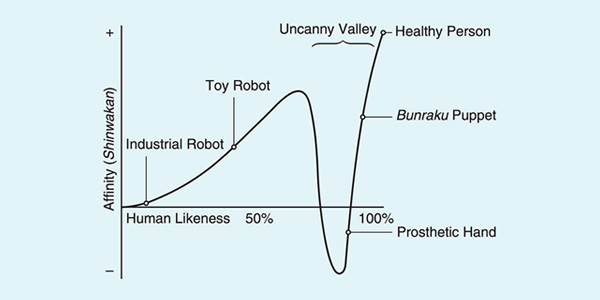- Tools
- Learn
- Help
Before you leave..
Why not download RevGlue latest free eguide.

“Hey Alexa, can you tell me the future of voice search?”
Alexa: “I’m not a fortune teller, but RevGlue has an article on the top eight-voice search predictions for 2022 and beyond.”
Whether you found us through a voice search, web search, or our social media, we’re glad you’re here. RevGlue helps bloggers and affiliates monetise their content through a variety of channels, and voice searches are on the rise. Statista predicts that there will be 8.4 billion voice assistants in use by 2024, and now is the time to get prepared. Today, we’re looking at how voice searches are set to change over the coming months and years, and how you can capitalise on trends to increase your traffic and ultimately, your revenue.
Content:
The role of voice in eCommerce

According to the latest Digital Commerce 360report, “Consumers spent $861.12 billion online with U.S. retailers in 2020, up 44.0% from $598.02 billion in 2019.” COVID-19 changed the way we shop online, and those trends aren’t likely to revert to the way things were before.
As voice searches increase alongside eCommerce, OC&C Consultants believes that by the year 2022, voice shopping will reach $40 Billion in the US and £5 billion in the UK. Some brands have already partnered with voice-activated platforms to drive higher sales.
As time passes, you can expect to see many more brand and platform voice partnerships.
Increased intelligence leads to an understanding of user intent

While movies often portray the catastrophic results of robot intelligence, businesses know that increased intelligence can be harnessed for good. Artificial intelligence is constantly evolving and learning, enhancing the user experience and increasing conversions. In 2015, Google confirmed the existence of RankBrain. This aspect of Google’s core algorithm utilises machine learning to better understand user intent and display the most relevant results to search queries.
Gone of the days of screaming at the AI on the other end of the telephone because it misunderstood your customer number or complaint. Every day, AI is getting more intelligent, predicting behaviours, picking up on the nuances of emotions, and understanding requests in different accents. In 2016, Apple acquired Emotient, a start-up geared toward understanding emotion by analysing facial expressions. At the time, the technology was sold to advertisers as a way to assess users’ reactions to promotions and shoppers’ facial expressions when visiting a store.
When AI is able to understand a wider audience, usage increases, and so does resulting income.
Predictions of words and phrases

In addition to interpreting intent, Google’s RankBrain predicts missing words and phrases to return an appropriate answer. For example, when you ask Siri “Where can I find a Starbucks?” you’ll likely receive an answer that shares the closest Starbucks to your location. However, if the AI were to answer solely based on the query, it may return a result along the lines of “Starbucks has 32,660 locations in 76 countries.”
Thanks to RankBrain, Siri fills in the missing “Where can I find a Starbucks near me?” to deliver the results most helpful to you at the moment. As AI learns more about user intent and collects more data on successful voice searches, the technology will become faster and more accurate when predicting missing words and phrases.
These are a few of the most common queries by voice search:
Since these are queries likely to be asked while a person is already en route in the car, it’s imperative that the predictive nature of voice search continues to expand for the safety of everyone on the road. A study byVoicebotreveals that 62% of drivers use voice search while in the car, and we believe that number is only set to rise as voice search gains the trust of users through predictive responses.
Speech-to-text capability or speech recognition capabilities

Recently, I requested that Siri send a text stating, “Give me a call” to a friend. Instead, the text read, “Give me a car.” My friend was understandably confused at my abrupt and out-of-character request. If you’ve ever sent a voice text from your car that came across completely wrong, you’ve been the victim of poor speech-to-text capability.
Speech-to-text (also known as speech recognition) is the process by which computers translate words spoken by a human into written format. As we move into the future of voice search, the speech-to-text capability is essential in returning accurate results.
IBM has been at the forefront of speech recognition since 1962, and its website discusses the algorithms, customisations, and computation techniques that come together to create an accurate and intelligent speech-to-text output. Because of the innovation by IBM and similar technology brands, speech recognition can tag different speakers, apply language weighting to prioritise frequently-used or industry-specific phrases and provide accessibility through text messaging.
As speech-to-text capabilities become more accurate, user trust will increase and voice search will continue to shift from a novelty to a fundamental part of daily life.
Brands will build trust with human voices

When you talk to Siri, Alexa, or Google, it’s immediately obvious that you’re conversing with a virtual assistant-- not a real person. However, some brands are capturing digital voiceprints to create AI that sounds more humanoid than a robot. You can listen to Barack Obama, Donald Trump, and Hilary Clinton discussing the algorithm to copy voices using deep-learning and artificial neural networks below.
Of course, we know that those aren’t actually the three politicians, but rather digital simulations created with their voiceprint. Through technological advances, AI is becoming more lifelike, conversational, and intelligent. When we can relate to the AI as “one of us,” brands can build trust without spending money and time on easy-to-fix problems.
While some experts claim we’ll see more humanoid voices in the AI space in the future, others aren’t so sure. The uncanny valley, coined in 1970 by Masahiro Mori, a robotics professor at the Tokyo Institute of Technology, refers to the relationship between humans and robots. The appeal factor grows as robots become more lifelike-- until they become too lifelike. Once the “uncanny valley” is reached, humans report a sense of distrust and unease with a robot that appears almost human.

Will the uncanny valley hinder lifelike AI voices from becoming the norm, or will an increase in exposure to lifelike AI increase trust? We’ll need a little more time to determine how this trend plays out.
Hyperlocal searches will continue to shift from text to voice search

According to a survey by BrightLocal, 58% of consumers have used voice search to find a local business in the past year and 46% of voice search employ the feature to look for a local business on a daily basis. With only 18% of participants saying they wouldn’t even consider using voice search, the current and potential voice search users number in the billions. As hyperlocal searches shift from text to voice search, now is the time to optimise your listing for voice search.
If you’re an affiliate who has relied on worldwide SEO, it’s time to shift your strategy and think local. How can you target your keywords to appeal to voice searchers looking for local businesses?
Say yes to voice-enabled audio advertising

Until now, advertising has been a largely one-sided conversation. Brands utilise newspapers, radios, televisions, and websites to get their message across. As we move into a voice-first world, advertisers are rethinking their strategy to bring customers into the conversation.
Big brands like Pandora, Spotify, Doritos, BMW, Nestle, and Ikea are talking directly to customers with “choose-your-own-adventure”-style ads. For example, Spotify asked listeners to say a series of commands to play a promoted podcast. Hellmann’s Mayonnaise teaches listeners how to use their product to get a more satisfying crunch when they make grilled cheese. And Ikea asks users a series of questions to create a personalised lullaby featuring products they selected.
This novel style of direct engagement is really paying off. While typical audio-only ads see a click-through rate of less than 1%, these voice dialogue ads delivered a 7.68% engagement rate and 4.28% interest rate. While those numbers alone are groundbreaking, the ads also prove to be more memorable. Voice dialogue ads are remembered by 58.3% of listeners, compared to the typical recall rate of 25-35% for audio-only ads.
Although this style of advertising actually requires interaction from users, 39% say this style of advertising is less intrusive than traditional methods of advertising. These voice-enabled ads require interaction from the listener to get started. This form of verbal consent puts the consumer in the driver’s seat, rather than traditional advertising that relied on a captive audience while ads played through the radio.
Voice-enabled digital ads provide a relational, human experience, which increases conversions, brand recognition, and trust. Now is the time to take advantage of this technology-- while it is still new and evolving. If you’re creating ads for your affiliate, invest in interactive voice ads before the market is saturated for the best chance of catching a user’s interest and buying power.
The monetisation of voice assistants

The first documented instance of PPC (pay-per-click) advertising happened in 1996. As we move toward a screenless search experience for users, the monetisation of voice assistants is the next big conversation. How can affiliates and advertisers earn an income when users are bypassing the clickable ads that drive revenue?
An article on Medium suggests three possibilities for monetisation through voice: recommendations, cost per conversion and offers relevant to a user’s current situation. As time goes on, we can expect to see tech brands offering opportunities for paid promotion through voice search and opportunities for businesses and affiliates to benefit from voice search monetisation.
A few voice search monetisation possibilities we’re likely to see in the future:
As tech’s focus is currently on gaining market share for their voice assistants, monetisation is on the back burner. However, as voice search becomes more mainstream and integrates into our daily lives, advertisements are sure to follow. Tech brands will need to walk the tightrope between monetisation and user trust-- only employing strategies that build trust and loyalty in this new arena.
When it comes to the capabilities and applications for voice search, we’re only at the tip of the iceberg. Now is the time to begin creating your voice search strategy with an eye on the future trends we discussed today. As you craft a voice search strategy that incorporates these 8 tips, be sure to check out our article on How to Optimize for Voice Search: 7 SEO Strategies for voice search to get found.
Have you made voice search a part of your marketing strategy? Share your experiences with us! Need help getting started? The team at RevGlue is here to help you with everything you need to make your affiliate journey a successful and profitable one.